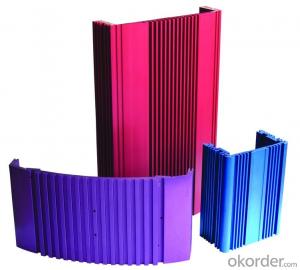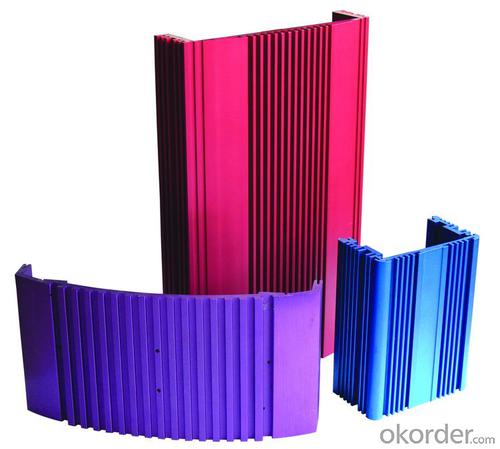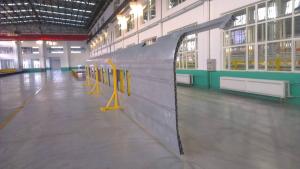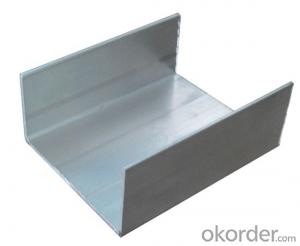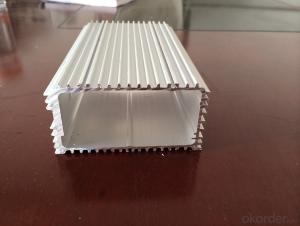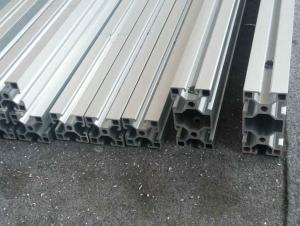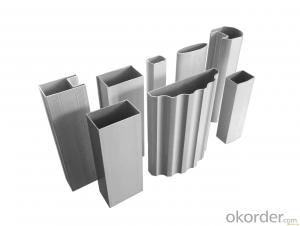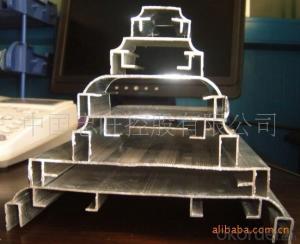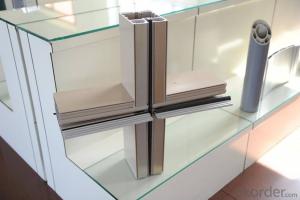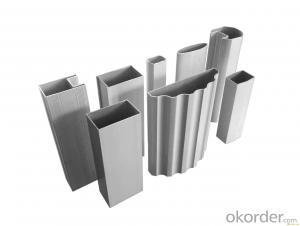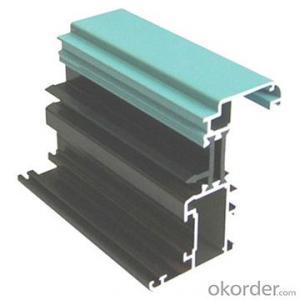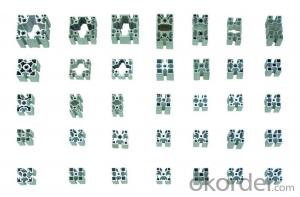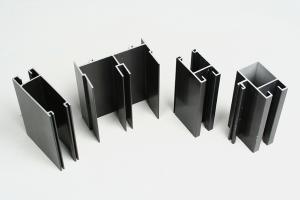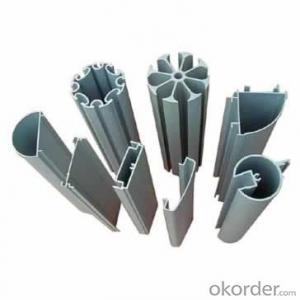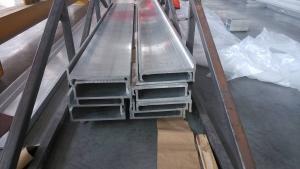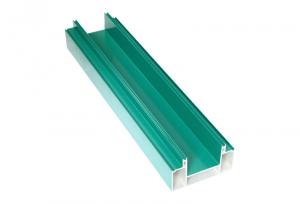Aluminum Extrusion Profiles for Doors and Windows Canada
- Loading Port:
- China Main Port
- Payment Terms:
- TT OR LC
- Min Order Qty:
- -
- Supply Capability:
- -
OKorder Service Pledge
OKorder Financial Service
You Might Also Like
Quick Details
| Place of Origin: | Brand Name: | Model Number: | |||
| Open Style: | Surface Finishing: | Type: | |||
| Sliding Door Type: | Door Material: | material: |
Packaging & Delivery
| Packaging Detail: | IN CARTON |
| Delivery Detail: | IN 15 DAYS |
Specifications
1)Usages:windows,doors,curtainwalls,solar panel
2)Material:Aluminum Alloy
3)Certificate:CE,ISO9001
Mould | Based on your drawings or use our moule |
| Profile shape | We can design and provide different shape according market order |
| Features | Subtle edges and elegant appearance andeasy processing and installation |
| Fabrication | windows,doors,cutting,drilling |
| Applications | doora/windows,equipment frame and industrial usage |
Goldsword Aluminum Factory | |
Business Type | Aluminium windows and doors profile |
Product series | aluminium windows and doors profile |
Price Determination | Based on Aluminum Ingot Price + Process fee |
Payment Term | T/T, L/C at sight |
Surface Treatment | We can provide aluminum profiles with mill finish, powder coating, anodizing, polishing, sand blasting, electrophoresis and wood color. |
Color | We can provide white, wood color, black, golden, blue, champagne, and other colors as required. |
Packing | Composite paper, Plastic paper, other packing method required by customers is available. 2 to 20 pcs per bundle, sometimes small profiles are plugged in big ones so as to save space for customers. |
Product specification | 1. Alloy: 6063-T5/T6 2. Length: 3-6.5 m 3. Normal anodizing thickness: 8 to 12 micro 4. Normal powder coating thickness: 60 – 100 micro 5. Tensile Strength: ≥160 MPa 6. Yield strength: ≥110 MPa 7. Extensibility: ≥8% 8. Hardness (HW): ≥8 |
1).materies:aluminium alloy
2)grade:6000 series
3)temper:T3-T8
4)certificate:CE,ISO9001:2008
- Q: Can you quote me one according to the current market situation?
- Aluminum: aluminum ingot + processing fee + Spray + heat insulationAluminum plate: square meter, unit price (depending on thickness) + spraying, etc.You cannot quote without specific parameters
- Q: T6 should be 140MPa, while the aluminum profile specification should be 150MPa. Should that be the standard?Code for design of glass curtain wall... And the calculation formula of bolt connection, what is the compressive strength value of aluminum profile?Prawns help you, 3Q~
- In this case, not only is the bending deformation produced by tensile stress, it is a large part of the moment and shear, in a large error.
- Q: Can aluminum profiles be an alternative to steel or iron?
- Aluminum profiles offer a viable alternative to steel or iron in numerous applications due to their lightweight, durability, and exceptional resistance to corrosion. These qualities make them suitable for diverse industries like construction, automotive, aerospace, and electrical. Unlike steel or iron, aluminum exhibits a high strength-to-weight ratio, enabling it to provide equivalent strength while being significantly lighter. Consequently, aluminum profiles are easier to handle, transport, and install, resulting in reduced overall costs. Moreover, aluminum profiles can be easily extruded into intricate shapes, allowing for design flexibility and customization. Nevertheless, it is crucial to acknowledge that aluminum profiles might not be suitable for all applications requiring the high strength or hardness offered by steel or iron. Hence, the decision between aluminum, steel, or iron profiles will rely on the specific requirements of the project or product.
- Q: Differences between industrial aluminum and iron products
- The so-called aluminum steel, generally divided into sections and plates, pipes and metal products in these four categories, general structural steel is usually refers to the production of metal structure steel for buildings, bridges, ships, boiler or other engineering. Such as carbon structural steel, low alloy steel, steel and so on.
- Q: What are the surface finishes available for aluminum profiles?
- There are several surface finishes available for aluminum profiles, each offering different aesthetics and properties. Some of the common surface finishes for aluminum profiles include: 1. Mill Finish: This is the standard finish obtained directly from the mill without any additional treatment. It has a raw appearance with visible manufacturing marks and is typically used for structural applications where aesthetics are not a concern. 2. Anodized Finish: This finish involves an electrochemical process that creates a protective oxide layer on the surface of the aluminum, resulting in increased corrosion resistance and durability. Anodized finishes are available in various colors and can provide a glossy or matte appearance, making them popular for decorative applications. 3. Powder Coating: Powder coating involves applying a dry powder onto the aluminum surface and then curing it in an oven. This finish provides excellent durability, corrosion resistance, and a wide range of color options. It can also offer various textures, such as smooth, matte, or textured, allowing for customization according to specific design requirements. 4. Brushed Finish: This finish is achieved by brushing the aluminum surface with abrasive materials to create a pattern of fine lines, giving it a brushed appearance. This finish is commonly used to add a decorative touch to aluminum profiles and can offer a sleek and modern look. 5. Polished Finish: Polishing involves using abrasive materials to create a smooth and shiny surface on the aluminum. This finish can range from a high gloss mirror-like appearance to a satin finish. Polished finishes are often used in architectural applications where a reflective and visually appealing surface is desired. 6. Wood Grain Finish: This finish involves applying a special coating to the aluminum surface, mimicking the appearance of wood grain. It provides a natural and warm look, making it suitable for applications where a wood-like aesthetic is desired without the maintenance requirements of actual wood. These are just a few examples of the surface finishes available for aluminum profiles. The choice of finish depends on the intended application, desired appearance, and specific requirements such as corrosion resistance, durability, and ease of maintenance.
- Q: This question asks for the standard specifications and measurements of aluminum profiles that are frequently utilized in construction projects.
- <p>Aluminum profiles used in construction come in various specifications and measurements. Commonly, they are categorized by series such as 6060, 6061, 6063, and 6082, each with different mechanical properties. Sizes can range from small profiles like 20x20mm to large ones like 200x200mm or more. Thicknesses typically vary from 1mm to 6mm, depending on the structural requirements. Lengths can be customized but are generally available in standard lengths such as 6 meters. The profiles are measured in terms of their width, height, and thickness, and they are designed to meet specific load-bearing and aesthetic needs in construction. It's important to consult with suppliers or construction specifications for the exact measurements required for a particular project.</p>
- Q: Whether aluminum profile of glass curtain wall needs compulsory test?
- Mechanical performance test report of 2. profiles, profile should be imported by the State commodity inspection department inspection certificate.
- Q: Are aluminum profiles easy to install?
- Yes, aluminum profiles are generally easy to install. They are lightweight and can be easily manipulated, making the installation process simpler compared to other materials. Additionally, aluminum profiles often come with pre-drilled holes or slots, which facilitate the installation and ensure accurate alignment. Furthermore, aluminum profiles usually feature a modular design, allowing for easy assembly and disassembly without the need for specialized tools or skills. Overall, the user-friendly nature of aluminum profiles makes them a popular choice for various applications, including construction, manufacturing, and DIY projects.
- Q: Which price is expensive for aluminum profiles 6063-T6 and 6063-T5?
- 2.2, second digits: an alloy that indicates the addition of alloying elements or impurities in the original alloy.0: watch master alloy1: table primary alloy is modified by the first timeThe original alloy of table 2: has been modified second times2.3, third, and four digits:Pure aluminum: represents the original alloyAlloy: the designation of individual alloys"- >: the later Hn or Tn indicates the condition of the work hardening or the symbol of the heat treatment state-Hn: indicating the symbol of temper of non heat treated alloys-Tn: the symbol of temper of heat treated alloysT5It is cooled by a high temperature molding process and then artificially aged. The utility model is suitable for the artificial aging product after being cooled by the high temperature forming process without being cold processed (which can be straightened and straightened without affecting the mechanical performance limit).
- Q: What are the advantages and disadvantages of the use of magnesium profiles compared with aluminum profiles?
- 5 specific gravity density: under the same volume conditions, magnesium alloy is lighter than aluminum alloy, which is the advantage of magnesium alloy.6 modulus of elasticity: the frame made of magnesium alloy is more rigid than aluminum alloy frame, and the frame made of the same thickness and caliber can absorb more trampling force when riding, which will influence riding efficiency.
Send your message to us
Aluminum Extrusion Profiles for Doors and Windows Canada
- Loading Port:
- China Main Port
- Payment Terms:
- TT OR LC
- Min Order Qty:
- -
- Supply Capability:
- -
OKorder Service Pledge
OKorder Financial Service
Similar products
Hot products
Hot Searches
Related keywords
